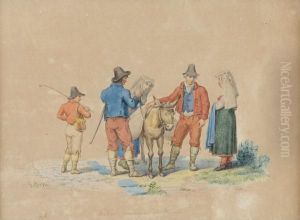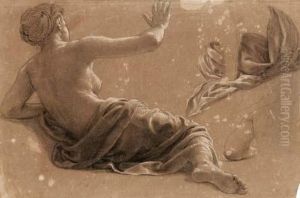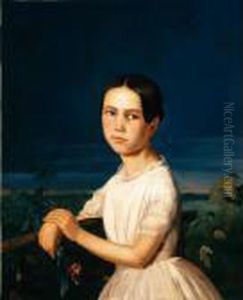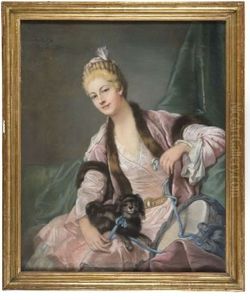Giuseppe Bossi Paintings
Giuseppe Bossi was an Italian painter, draftsman, and art scholar, known for his contributions to the neoclassical movement in Italy. Born on August 11, 1777, in Motta Visconti, Lombardy, Bossi developed an early interest in art, leading him to study under prominent artists in Milan. His artistic pursuits were diverse, encompassing painting, drawing, and the study of art history, which significantly influenced his career.
Bossi's work was deeply influenced by the neoclassical ideals of beauty, simplicity, and classical antiquity. Throughout his career, he created numerous historical and mythological paintings, along with portraits and landscapes. However, Bossi's contributions to the art world were not limited to his creations. He was an avid collector of drawings and prints, amassing a significant collection that included works by renowned artists such as Leonardo da Vinci. His collection and scholarly work played a pivotal role in the study and appreciation of Italian Renaissance art.
In addition to his artistic and collecting endeavors, Giuseppe Bossi served as the secretary of the Brera Academy in Milan, one of Italy's most prestigious art institutions. In this role, he was instrumental in organizing exhibitions, enhancing the academy's collections, and promoting the study of art history. Bossi's dedication to the academy and his efforts to elevate the status of art education in Italy left a lasting impact on the institution and its students.
One of Bossi's most notable scholarly works is his monograph on Leonardo da Vinci's 'The Last Supper,' which showcased his deep analysis and understanding of Renaissance art. His writings contributed significantly to the art historical scholarship of his time, influencing contemporary and future studies of Italian art.
Giuseppe Bossi's life was cut short when he died on December 24, 1815, in Milan. Despite his relatively brief career, his legacy as a painter, collector, and art scholar endures. His efforts to bridge the gap between art creation and art scholarship have left an indelible mark on the history of Italian art, making him a pivotal figure in the neoclassical movement.
















